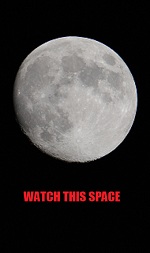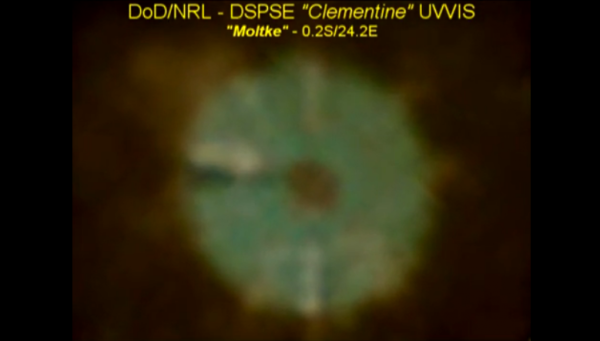This slideshow requires JavaScript.
Strange. Very strange.
And disconcerting.
Disappointing, too.
Then again it is NASA. A rather bizarre organization, NASA.
You see, this post was initially inspired by my running across an interesting page at Lunar Explorer Italia last night titled AS 15-83-11218 and the Stephenville UFO: a VERY SMART image-comparison (by Carlo Contu). As you no doubt have gathered from said title, Mr. Contu noticed that the Apollo image in question and the sportiest image of the infamous Stephenville, Texas UFO are remarkably similar. You know the one, the pretty rainbow colored squiggly line in the night sky…
So I Googled up the image number, all set to do a session in Photoshop. But it wasn’t available nice and large at NASA History’s Apollo Image Library… in fact they don’t even list the magazine as existing at all! What’s up with that? Note that they do list magazines for which they have no pictures to show yet… so, why not 83?
All was not lost, as they are all shown on the Lunar and Planetary Institute’s Apollo Image Atlas… but the images at LPI are all small, all at low resolution and none are really suitable for delving into in hopes of doing any sort of confident analysis. Some clues came out, though…
Here’s the text at the LPI page for this magazine:
Apollo Image Atlas
70mm Hasselblad Image Catalog
Apollo 15, Magazine ??
Images AS15-83-11218 to AS15-83-11234
Why does it say “Magazine ??”? Huh? What was that? Note, of course, that right below that line, in the picture range it clearly states AS15-83-xxx to AS15-83-xxx. 83, again, is the magazine number.
Ah, I see, when you go to the individual photos it lists right below them their confusion’s source, they don’t know the Letter sub-designation of magazine 83. Well, why not? And even so does not knowing the letter therefore qualify it’s contents for near oblivion, displayed small and low-res on a sub-site for the Apollo program?
Note: For those not familiar with magazines, they are a removable part of the Hasselblad camera, a film holding ‘magazine,’ pre-loaded with film that eliminates the need to string the film through the camera as in a standard 35mm camera. They just snap on and off the back.
Note, too, that 83 was not the first magazine used by the Apollo 15 crew, so although there seems to be some sort of labeling error, I don’t imagine that there were any other issues with it. The Image Atlas starts at 82… which naturally makes me wonder about the existence of 1 through 81, but that’s not completely relevant here. The ones they do show are otherwise sequential in content.
As you can see below, the images captured are intriguing… to say the least… especially the last one, the swoopy, streaky and oh so freaky AS15-83-11234.
What do they show? I can’t say as I know. I can speculate as well as you can, but unless the impossible happens and the crew of 15 give us a play-by-play description, speculation is all we’ve got. Another thing to speculate about is why are there only 17 pictures? Why did they stop snapping? Must see if I can find anything in the transcripts, but, I rather doubt that if there was anything exciting going on it’d still be within them.
I really do like that last one… what the hell is all that? It’s absolutely fascinating. Was there an encounter with something, something we can barely comprehend, way out there in the cold, vast darkness of space?
Hmmm?











































 What’s All This, Then? is copyright © 2009 to the present by Ignatius F Makarevich - All rights reserved worldwide.
What’s All This, Then? is copyright © 2009 to the present by Ignatius F Makarevich - All rights reserved worldwide.


